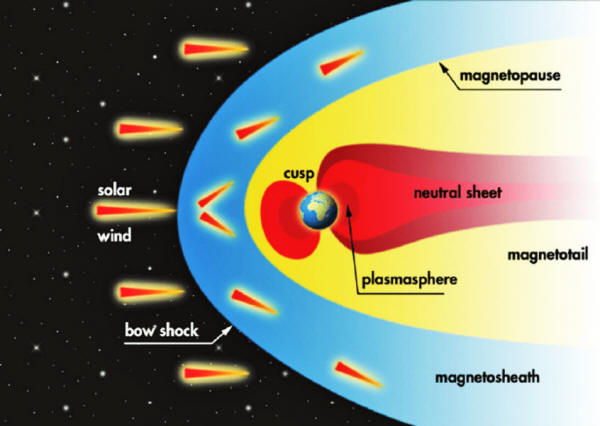|

by Cap Allon
February 18,
2020
from
Electroverse Website

No sunspots. No solar flares. No gust of solar wind.
In
short, there was no reason to expect an
outburst of auroras on Feb. 17... then this happened.
Featured
image shot by A. Kuznetsov
in Kilpisjärvi, Finland on Monday
Both the Sun and Earth have magnetic fields, though the Sun's isn't
confined to the immediate vicinity of the star - solar wind carries
it throughout the entire solar system.
As the excellent Dr. Tony Phillips over at
spaceweather.com explains, out
among the planets we call the Sun's magnetic field the
"Interplanetary Magnetic Field" or
IMF.
Because the Sun rotates
(once every 27 days), the IMF has a spiral shape, named the "Parker
spiral" after the scientist who first described it.
Earth's magnetic field, on the other-hand, forms a defensive bubble
around our planet called the
magnetosphere which exists, in
part, to deflect the solar wind gusts.
Earth's magnetic field
and the IMF come into contact at the magnetopause... a place where
the magnetosphere meets the
solar wind.

Earth's magnetic field points north at the magnetopause.
If the IMF points south -
a condition scientists call "southward Bz" - then
the IMF can partially cancel Earth's magnetic field at the point of
contact.
"When Bz
is south, that is, opposite Earth's magnetic field, the two
fields link up," explains Christopher Russell, a Professor of
Geophysics and Space Physics at UCLA.
"You can then follow
a field line from Earth directly into the solar wind" - or from
the solar wind to Earth.
South-pointing Bz's
open a door through which energy from the solar wind can reach
Earth's atmosphere - the event often heralds widespread auroras,
triggered by solar wind gusts or coronal mass ejections (CMEs)
that are able to inject energy into our planet's magnetosphere.
A southward Bz explains the shock auroras observed on
Feb. 18, but only in part, as there was no solar wind and certainly
no CME accompanying it.
"Surprise auroras
strike big!" exclaims Alexander Kuznetsov, the Finnish
photographer behind the capturing of Monday's display in
Kilpisjärvi, Lapland.


An aurora is seen in the sky in Kilpisjarvi,
Finland (Reuters/Alexander Kuznetsov)
Source
"At one point they went pink and moved very fast!
"I also saw a fast corona unfolding above me, reminding me of an
angel.
"When I first went outside, I was not expecting much because the
solar wind speed was relatively low, so I did not take my
snowshoes," said Kuznetsov.
"Then the show began.
Currently, there is over a meter of snow in Kilpisjärvi, so I
had to crawl through some snowy terrain to get to the best
viewing spot."
No sunspots. No solar
flares. No gust of solar wind...
So, where exactly did these auroras come from?
-
One: as
touched on above, a crack opened in Earth's magnetic field
(that is, "Bz tilted south") allowing solar wind
to pour in and fuel the display.
-
Two:
Earth's magnetic field is waning in line with a Grand Solar
Minimum and a Magnetic Pole Shift.
These two
independently occurring factors drastically reduce Earth's
magnetic field strength, the major upshots of which being:
-
an influx
of atmospheric Cosmic Rays meaning increased cloud
nucleation as well as a heating of the
muons in
silica-rich magma which triggers large-scale
volcanic eruptions
-
outbursts
from the Sun having a much larger impact here on
Earth, meaning even minor "non-events" such as Feb.
17's can produce surprisingly dramatic results.
In addition,
a) leads to
global cooling, while b) means
trouble for the electrical grid...
NASA is attempting to
paint the upcoming
Grand Solar Minimum as a window of
opportunity for space missions,
"the improving
ability to make such predictions about space weather are good
news for mission planners who can schedule human exploration
missions during periods of lower radiation."
However this is absurd,
and serves as yet another example of government obfuscation and
half-truths.
NASA are effectively forecasting a return to the
Dalton Minimum (1790-1830) but
gives no mention of the brutal cold, crop loss, famine, war, and
powerful Volcanic eruptions associated with it.
Neither are they warning
of the widespread destruction a major solar flare (or CME) will
cause to our modern-day electrical grid, given that our shields are
down...
| 




